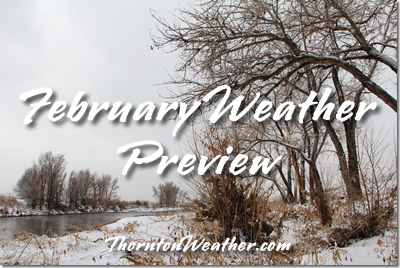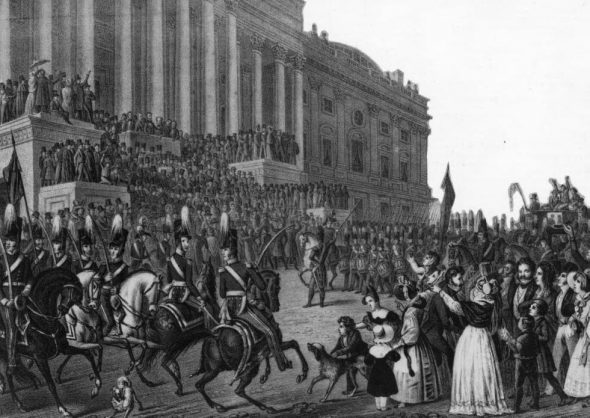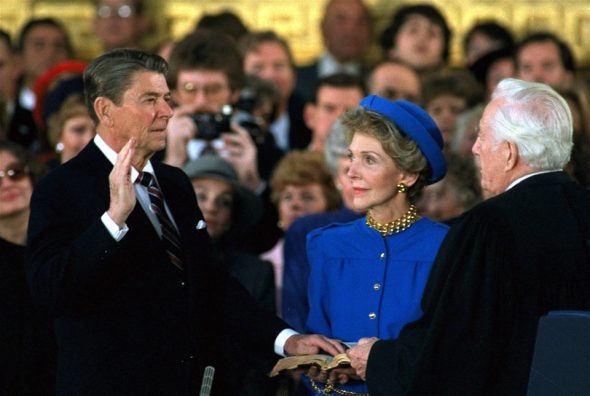
High winds are in many ways the most common extreme weather event in January as they frequently rake the foothills this time of year. Our look back at this week in weather history shows many such damaging events. There are also of course snowstorms and examples of extreme cold.
From the National Weather Service:
10-12
In 1997…heavy snow fell over the Front Range foothills. A foot of new snow was measured at Blackhawk with 7 inches recorded in Coal Creek Canyon. Only 3.3 inches of snow fell at the site of the former Stapleton International Airport. East-northeast winds gusted to 18 mph at Denver International Airport on the 11th.
10-13
In 1963…an arctic cold wave plunged temperatures well below zero across metro Denver. Temperatures were below zero for a total of 64 consecutive hours. Low temperatures reached 25 degrees below zero on both the 11th and 12th. The high temperature of 9 degrees below zero on the 11th was the coldest ever recorded at Stapleton Airport and equaled the record low maximum for the month first set on January 19…1883…in downtown Denver. The high temperature on the 12th reached only 1 degree below zero. On the 12th…an 18-year-old youth died of exposure from the extreme cold in Denver. There were many losses and damage to property from frozen water systems…stalled cars…and over-burdened heating systems. Light snow accompanied the arctic blast. At Stapleton Airport…2.3 inches of snow fell on the 10th and 11th.
11-12
In 1972…high winds howled along the Front Range foothills. A wind gust to 144 mph was recorded at the National Center for Atmospheric Research in Boulder. A wind gust to 105 mph was recorded at the Rocky Flats plant south of Boulder. Wind gusts to 90 mph were recorded in downtown Boulder. The greatest damage from the windstorm occurred in Boulder where 25 or more mobile homes were destroyed either by wind or the fires which resulted when they were overturned. Car windows were blown out; many buildings damaged; utility poles…power lines…trees…and traffic lights blown down. As many as 75 families were evacuated from a recently completed apartment building because of severe structural damage. Government and private office buildings and industrial plants were evacuated because of danger from flying glass and debris. Twelve people were treated at the hospital…mostly for cuts from flying glass. At least 15 small planes were seriously damaged and hangar doors were blown off at the Jefferson County Airport in Broomfield. Wind damage in Boulder alone totaled 2 million dollars. At Stapleton International Airport…west winds gusted to 53 mph on the 11th and to 47 mph on the 12th. The strong Chinook winds warmed temperatures into the mid 50’s on both days.
In 2019…an upslope snow event produced heavy snow in the southern Front Range Foothills and Palmer Divide…with light to moderate snowfall elsewhere. In the Front Range Foothills and Palmer Divide storm totals included: 18 inches at Schaffers Crossing…16.5 inches near Tiny Town… 15.5 inches in Pinecliffe…14 inches in Crescent Village… 13.5 inches near Aspen Park…13 inches…11 miles southeast of Arapahoe Park; 12.5 inches near Genesee and Kittredge… 12 inches near Perry Park…11 inches near Conifer…with 6 to 10 inches elsewhere. Across the western and southern suburbs of Denver storm totals included: 7.5 inches near Centennial…6 inches in Louisville and Westminster…5.5 inches in Federal Heights…5 inches in Broomfield…with 2 to 4 inches elsewhere. The official snowfall measurement at Denver International Airport was 1.3 inches.
11-14
In 1997…cold arctic air plunged temperatures below zero across metro Denver. The temperature was below zero for 60 consecutive hours from the afternoon on the 11th to around daybreak on the 14th. The high temperature of only 1 degree below zero on the 12th equaled the record low maximum for the date last set in 1963. The low temperature dipped to 14 degrees below zero on the 12th.
12
In 1888…gale force winds toppled the weather instrument shelter in downtown Denver. The strong winds in the foothills blew a train off the track at Georgetown. Northwest winds were sustained to 60 mph in the city. The strong winds warmed the temperature to a high of 50 degrees.
In 1980…strong winds in Boulder peaked to 95 mph at Table Mesa. Northwest winds gusted to only 29 mph at Stapleton International Airport.
In 1992…a strong pacific storm system dumped heavy snow across portions of metro Denver. Conifer…in the foothills southwest of Denver…received 17.5 inches of snow. Eleven inches fell at Lake Eldora west of Boulder…with 7 inches recorded at Morrison and 6 inches at Castle Rock. At Stapleton International Airport where north winds gusted to 31 mph…the snowfall totaled only 4.4 inches. Strong winds forced the closure of some highways.
In 1998…very strong winds and heavy snow caused blizzard conditions in the mountains to spread over portions of the Front Range foothills. Just east of the Continental Divide…sustained winds from 80 to 85 mph with gusts to 100 mph were recorded at Silver Spruce Ranch near Ward… Resulting in whiteout conditions. Only a trace of snow fell at the site of the former Stapleton International Airport. North winds gusted to only 28 mph at Denver International Airport.
In 2009…a fast moving storm system brought heavy snow to the foothills of Boulder and Jefferson counties…as well as the western and southern Denver suburbs. Storm totals generally ranged from 4 to 9 inches. The snowfall measurement at Denver International Airport was 3.0 inches.
12-13
In 1936…strong winds in Boulder blew roofs off homes. Wind gusts over 60 mph were recorded at the University of Colorado and a gust to 55 mph measured at Valmont.
In 2002…high winds developed in the foothills on the 12th and spread over the plains on the 13th. Winds gusted to 76 mph at the National Center for Atmospheric Research on the mesa in Boulder on the 12th. Northwest winds gusted to 49 mph…the highest wind of the month…at Denver International Airport on the 13th. The strongest winds were north and northeast of metro Denver.
13
In 1875…the low temperature dipped to 20 degrees below zero… A record low for the date and climbed to a high of only 2 degrees below zero…a record low maximum for the date.
In 1880…the worst wind storm ever experienced in Boulder caused some damage and personal injuries.
In 1893…northwest winds were sustained to 42 mph in the city.
In 1904…northwest winds were sustained to 40 mph with gusts as high as 50 mph. The Chinook winds warmed the temperature to a high of 63 degrees. The low temperature remained above freezing…dipping to only 34 degrees.
In 1919…snowfall was 1.8 inches in downtown Denver. Melted snow resulted in only 0.12 inch of precipitation. This was the only snowfall and precipitation for the month.
In 1932…snowfall totaled 3.4 inches in downtown Denver. North winds gusted to 22 mph.
In 1967…high winds in Boulder gusted to 70 mph downtown. Some damage occurred. Northwest winds gusting to 38 mph at Stapleton International Airport produced some blowing dust.
In 1988…high winds occurred in Boulder with a wind gust to 70 mph at Table Mesa. In the foothills a wind gust to 82 mph was measured at Rollinsville. West winds gusted to 33 mph at Stapleton International Airport.
13-14
In 1960…snowfall totaled only 4.4 inches and northeast winds gusted to 28 mph at Stapleton Airport…while over southeast Colorado a near blizzard closed roads with drifts 3 to 6 feet deep.
13-15
In 2021…strong and damaging winds developed across Front Range mountains…foothills and adjacent plains. A large shed blew over and smashed into a parked car in Gold Hill in the foothills of Boulder County. Across metro Denver…a fallen tree brought down power lines and sparked a small grass and shed fire; another tree fell into a house in Centennial. No injuries were reported. In the mountains and foothills… peak gusts included: 94 mph near Crisman…83 mph at Blackhawk… 80 mph near Marshall…and 79 mph near Berthoud Pass. Across the urban corridor and adjacent plains…peak gusts included: 69 mph near Centennial…64 mph in Broomfield…63 mph near Elizabeth and Northglenn…62 mph at Strasburg…60 mph near Buckley AFB…Castle Pines…Lone Tree and Parker…and 59 mph near Littleton. At Denver International Airport…a peak wind gust of 58 mph was observed from the west on the 13th…with another gust to 58 mph from the north observed on the 14th.
13-16
In 1888…a cold air mass settled over the city and caused temperatures to plunge well below zero on four consecutive days…but only one temperature record was set. Minimum temperatures dipped to 4 degrees below zero on the 13th… 19 degrees below zero on the 14th…20 degrees below zero on the 15th…and 11 degrees below zero on the 16th. The maximum temperature of only 4 degrees below zero on the 14th was a record low maximum for the date. North winds were sustained to 30 mph on the 13th.
14
In 1873…winds were brisk all day. After sunset…northeast sustained winds produced a perfect gale…behind an apparent cold front.
In 1875…the temperature remained below zero all day with a general northeast wind. At 9:00 pm the temperature was 1 degree above zero which was the official high for the day. The wind suddenly veered to the southwest and the temperature climbed 19 degrees in 15 minutes…7 more degrees in the next 5 minutes…and by 9:30 pm had risen to 36 degrees. By 9:35 pm the temperature had reached 40 degrees…a rise of 48 degrees in one hour and 39 degrees in half an hour. The sudden rise in temperature could be attributed to a receding arctic air mass and downsloping surface winds.
In 1906…the temperature climbed to a high of 56 degrees before an apparent cold front produced northeast winds sustained to 40 mph and a trace of snow in the afternoon.
In 1921…west winds were sustained to 44 mph with gusts to 46 mph. The downslope winds warmed the temperature to a high of 49 degrees.
In 1967…3.7 inches of snow fell at Stapleton International Airport with 7.7 inches measured in Boulder.
In 1982…strong Chinook winds buffeted Boulder…tearing the roof off a small apartment building. A gust to 88 mph was measured in Lakewood. Wind gusts of 60 to 80 mph were common along the foothills from Denver north to Fort Collins. Four people sustained minor injuries…mostly from flying glass. At least one person was knocked down by the winds. Several tractor trailer rigs were blown off I-70 near Golden…and numerous camper shells were blown off pick-up trucks.
14-15
In 1908…heavy post-frontal snowfall totaled 6.5 inches overnight. North winds were sustained to 32 mph. The temperature dropped 41 degrees in 24 hours from a reading of 48 degrees at 8:00 pm on the 14th to only 7 degrees at 8:00 pm on the 15th.
In 1950…strong winds occurred in Boulder and Louisville. Winds in excess of 60 mph were recorded at Valmont. Minor damage was reported. Southwest winds gusted to 50 mph at Stapleton Airport.
In 1959…a total of 5.5 inches of snow fell at Stapleton Airport.
In 1992…snow spread from the mountains across metro Denver. The heaviest snow was across the northern portion of the area where 7 inches fell at Thornton. At Stapleton International Airport…only 3.4 inches of snowfall were recorded and northeast winds gusting to 37 mph caused some blowing snow on the 14th.
In 1999…high winds howled across metro Denver. In Commerce City…strong winds toppled 3 utility poles resulting in a power outage to 600 homes. High wind reports included: 108 mph at Wondervu…80 mph at the Hiwan Golf Course in Evergreen…76 mph at Aspen Springs…75 mph at the Jefferson County Airport near Broomfield…74 mph in Boulder…and 70 mph at Georgetown. West to northwest winds gusted to 48 mph…the highest wind gust of the month…and warmed the temperature to a high of 60 degrees at Denver International Airport on the 15th.
14-21
In 1930…a protracted cold spell occurred when low temperatures plunged below zero on 8 consecutive days. The coldest low temperatures of 20 degrees below zero on the 17th and 19 degrees below zero on the 16th were record minimums for the dates. High temperatures during the period ranged from 18 on the 18th to zero on the 20th. Two degrees on the 15th was a record low maximum temperature for the date.
Continue reading January 12 to January 18: This Week in Denver Weather History →




























































































